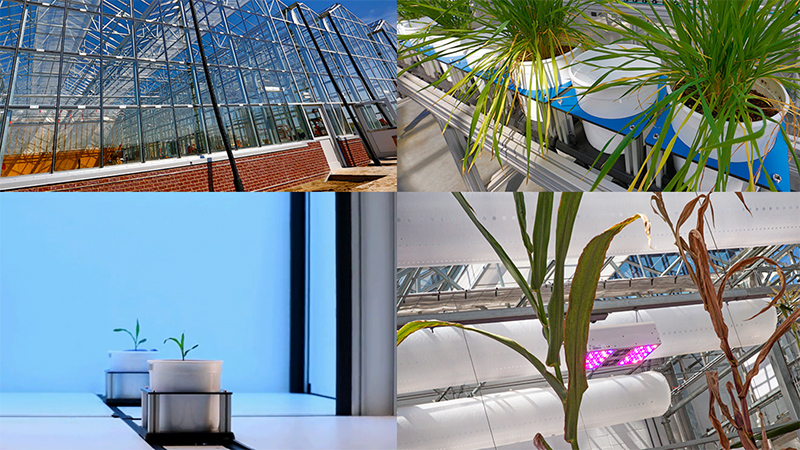
The growth of the global population — nearly 8 billion now, expected to approach 10 billion by 2050 — would be motivation enough to continue breeding and refining crops that can yield more food amid challenging conditions. A parallel increase in the number and severity of droughts, which already contributed to roughly two-thirds of the world’s yield losses over the past 50 years, has only heightened the urgency.
To speed the pace of analyzing how crop varieties respond to drought for the sake of developing those more resistant to it, Husker researchers rely on the Greenhouse Innovation Center. There, conveyor belts ferry corn, sorghum and other plants through various chambers that record the crops with cameras. Some of those cameras see as people do, taking in just the visible portion of the electromagnetic spectrum. Others are hyperspectral, capturing wavelengths from the visible but also the near-infrared portion of the spectrum — those beyond human sight. By using both types of cameras to image plants at regular intervals, then comparing the responses of well-hydrated crops to those deprived of water, researchers can rapidly assess the drought resilience of different crop varieties.
The School of Natural Resources’ Sruti Das Choudhury, Tala Awada and Anastasios Mazis recently joined the School of Computing’s Ashok Samal in developing two algorithms that could help extract yet more information from the imagery generated at the greenhouse. One of those algorithms analyzes a series of visible-spectrum images to predict the onset of drought stress in plants that are drooping but have yet to undergo the discoloration that can stem from dehydration. The other algorithm, which relies on hyperspectral imagery, can essentially map that stress in specific parts of a plant by analyzing the reflection signatures of pixels from the digital images, then classifying each as stressed or unstressed.
When the team compared the percentage of stress-detected pixels against the water content of a plant’s soil, they found a strong correlation between the two — suggesting that the hyperspectral algorithm was performing as intended. The appearance of those pixels also corresponded with the other algorithm’s prediction of drought stress in the plant as a whole.
Together, the researchers said, the algorithms should help better differentiate between crop varieties that are susceptible vs. resistant to drought. Though the team used cotton plants in its case study, the algorithms should prove generalizable to any plant species and even other stressors, including heat and salinity.
More details at: https://www.frontiersin.org/articles/10.3389/fpls.2023.1003150/full